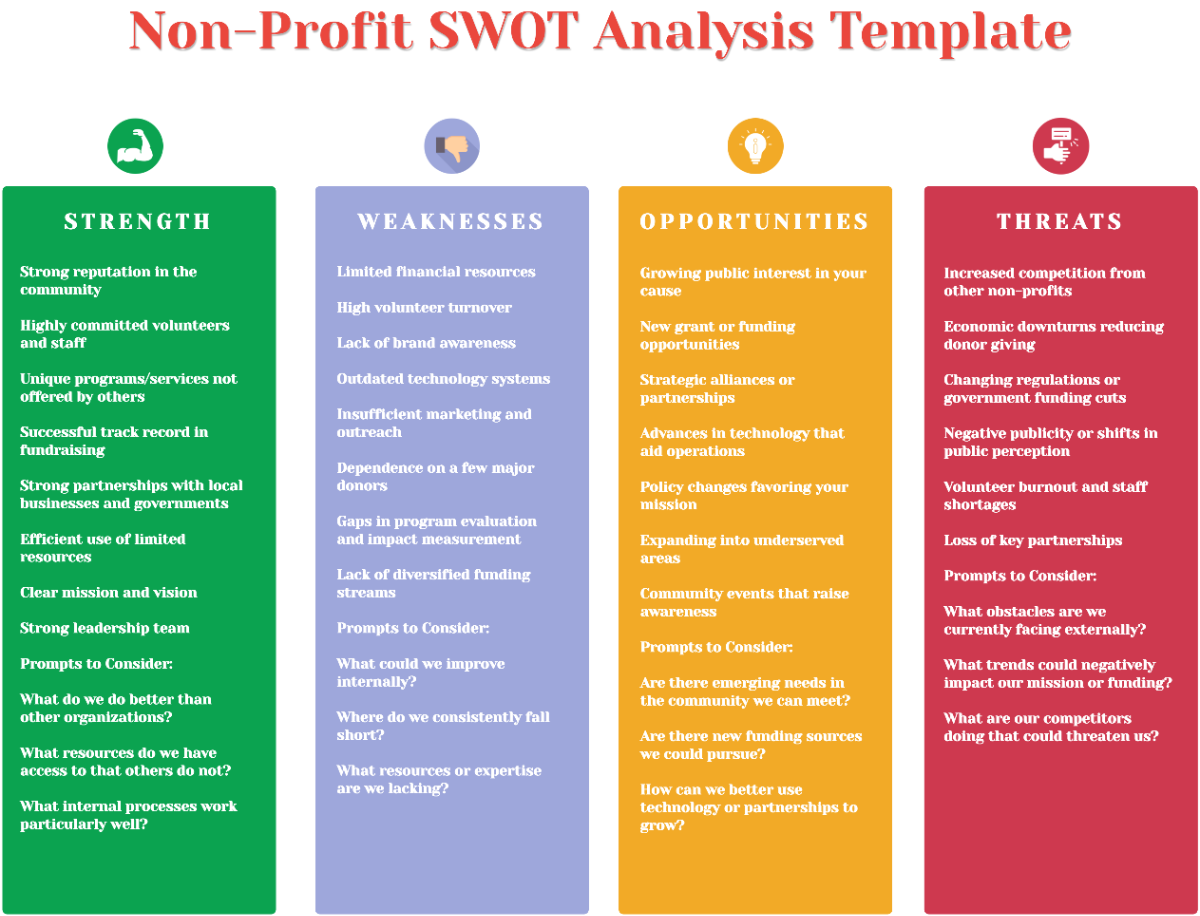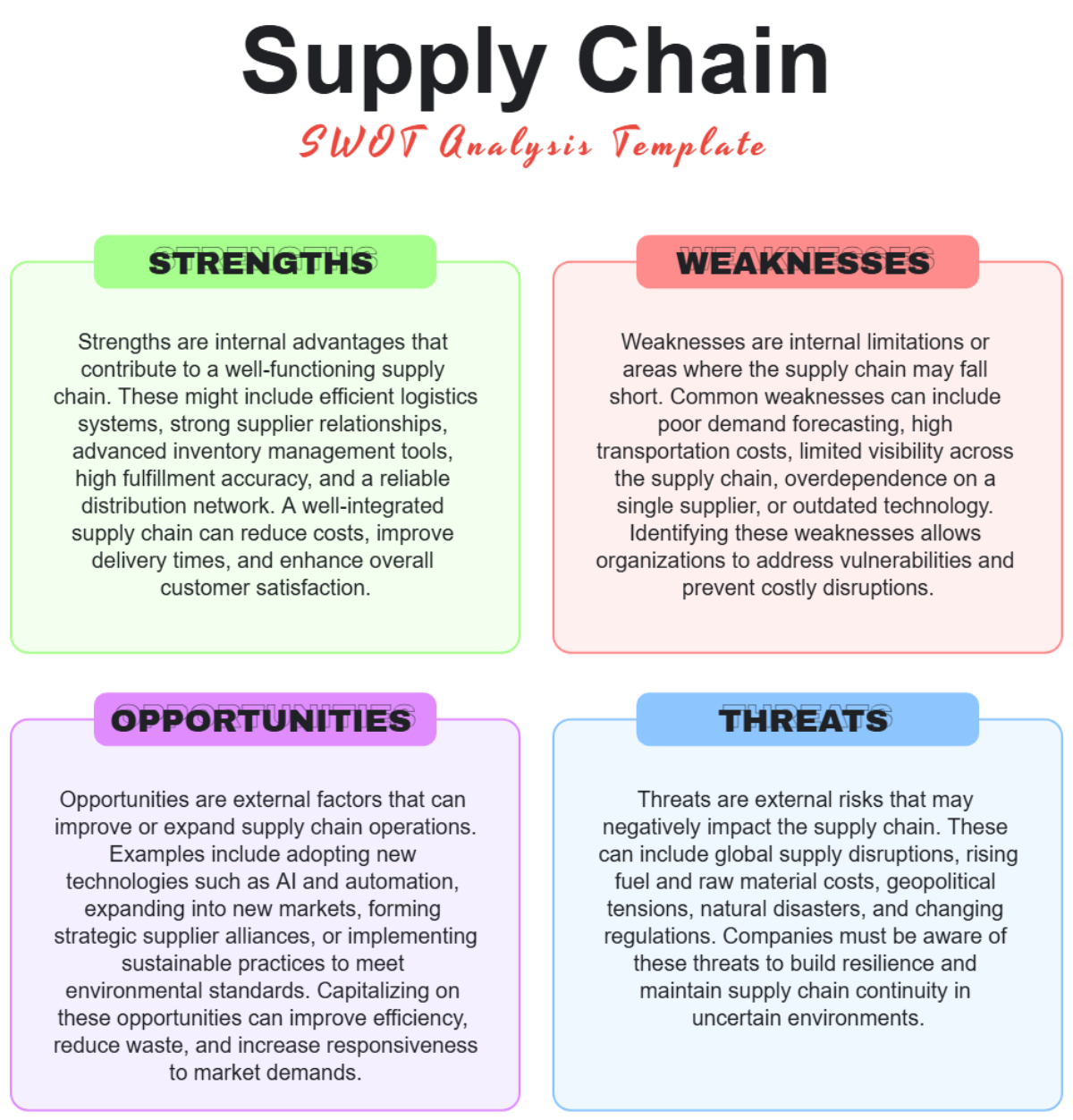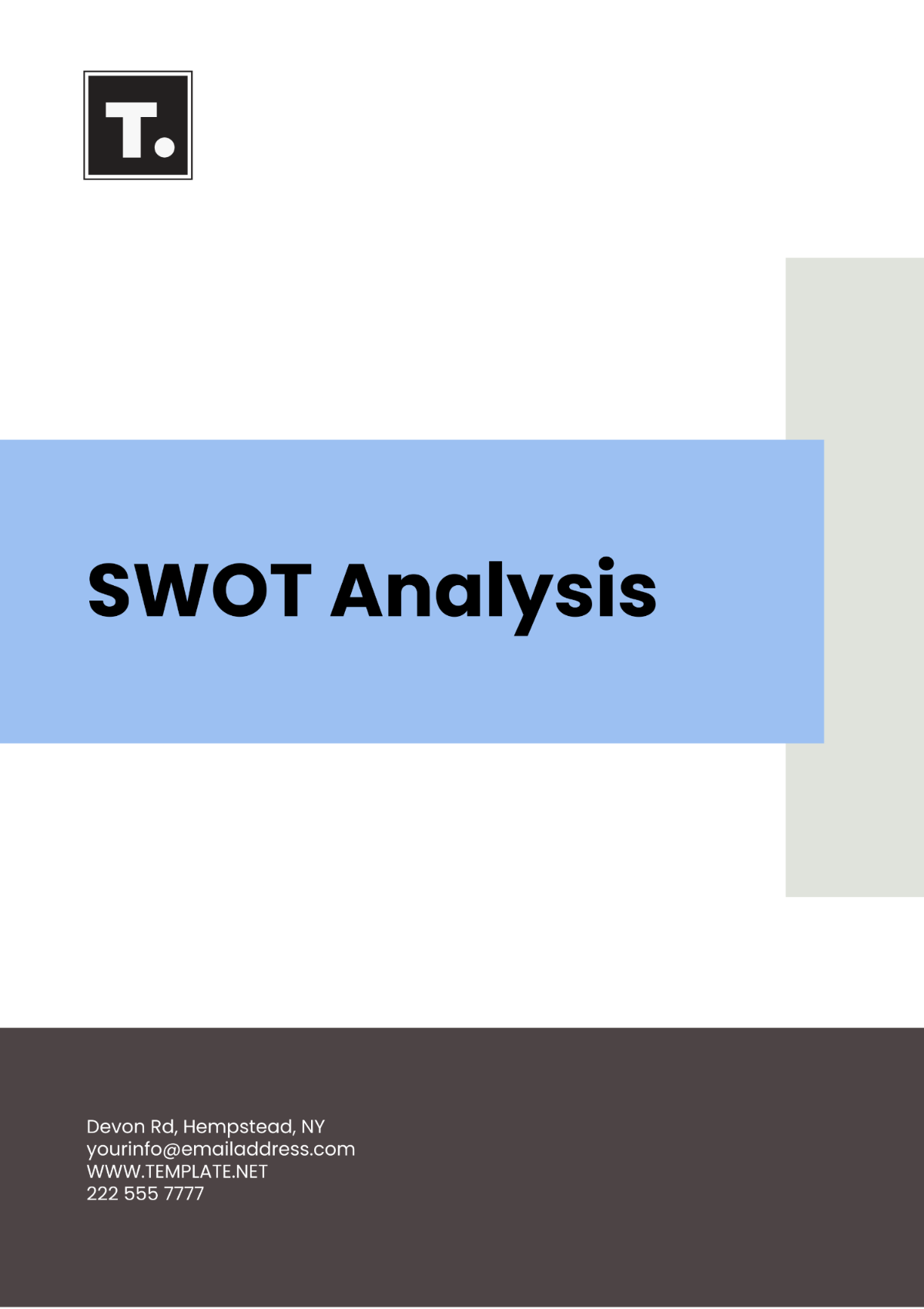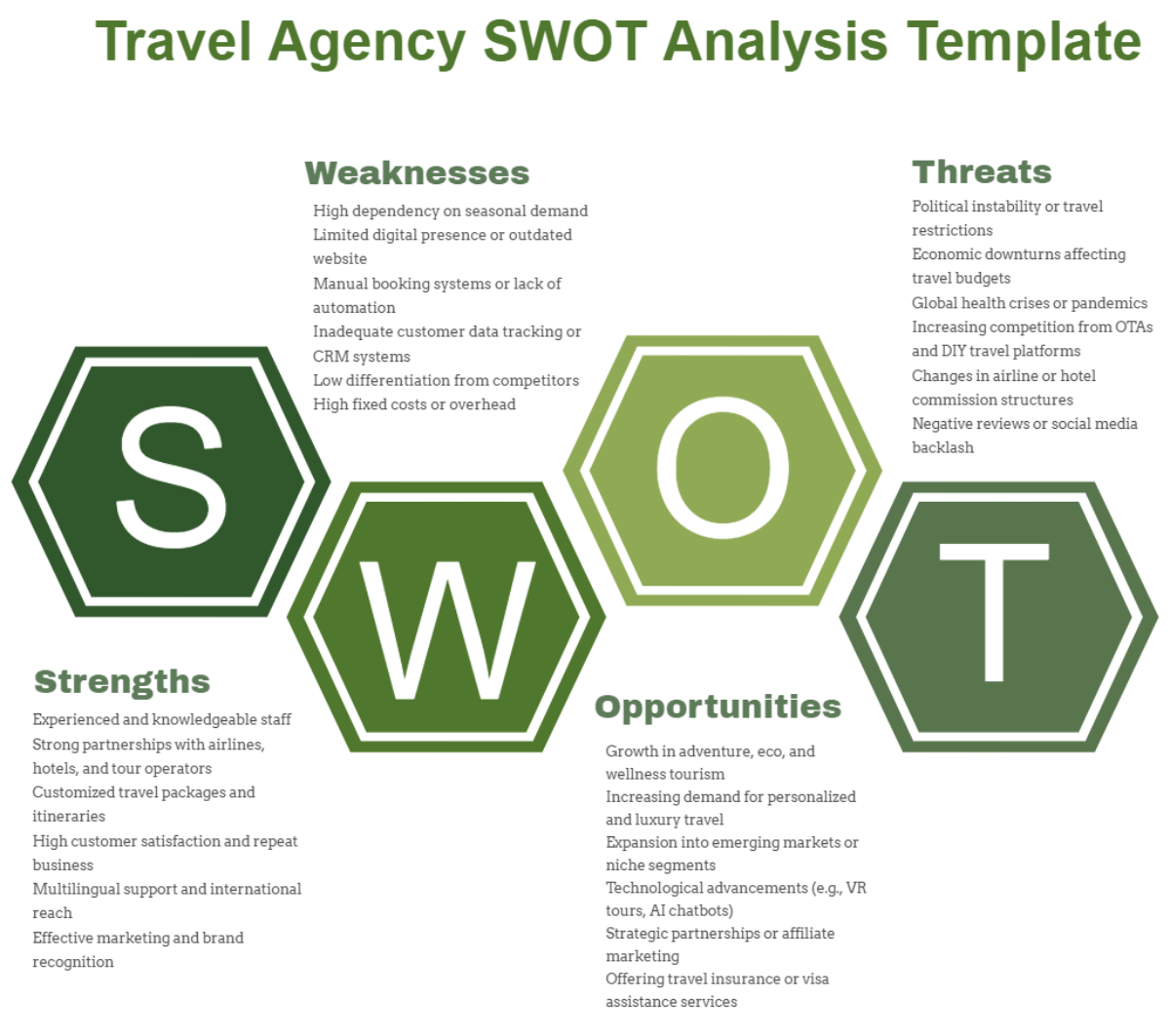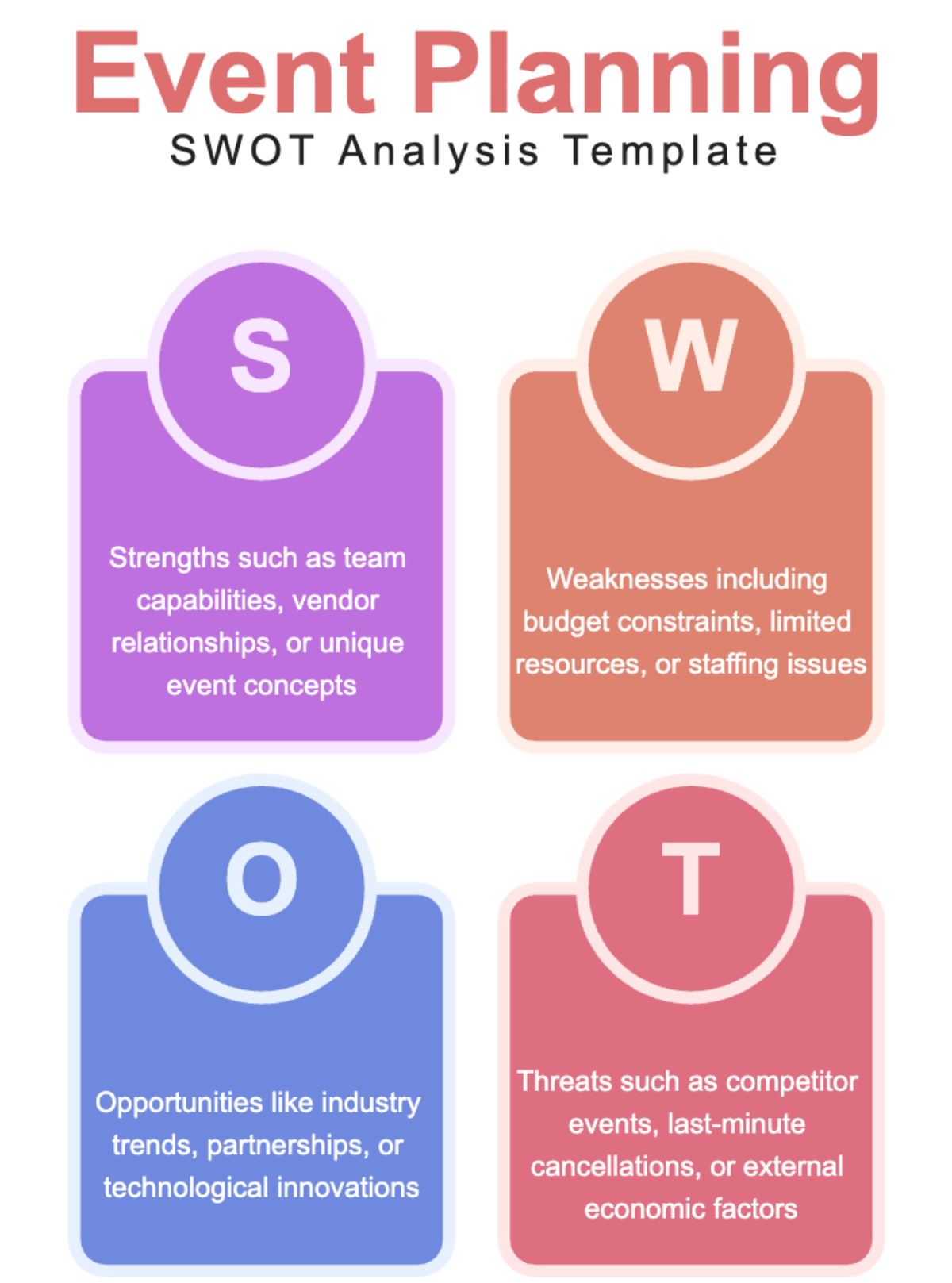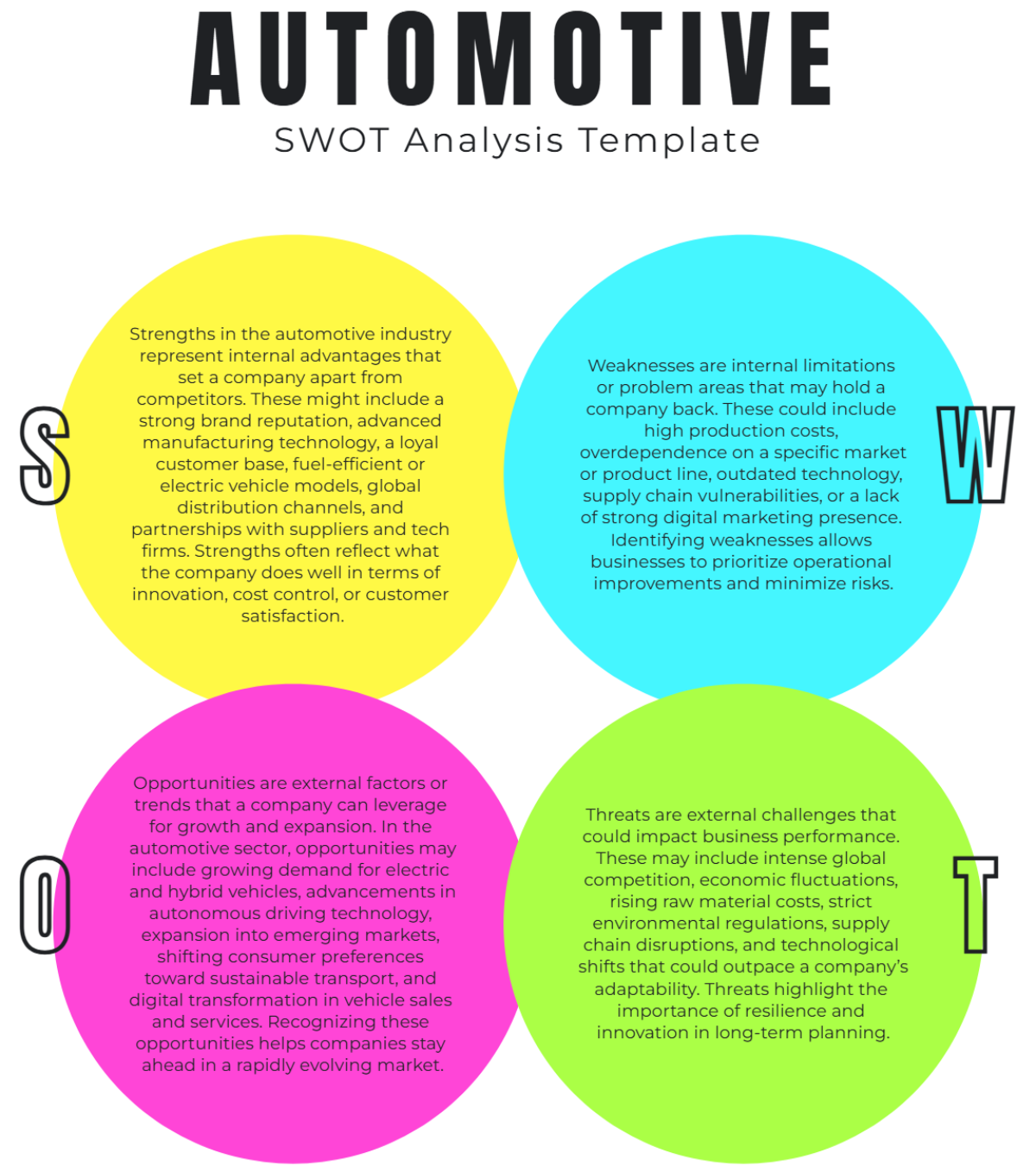Free Industry Analysis Template
Industry Analysis
Prepared By: | [Your Name] |
Department: | [Your Department] |
I. Executive Summary
An overview emphasizing the key insights from the analysis, summarizing the potential avenues for business expansion and competitive positioning within the market.
Summary of industry trends: Deep analysis shows a trend towards sustainability, fueled by consumer preference for eco-friendly products, and the use of AI and machine learning is transforming business models by boosting efficiency and personalizing customer experiences.
Identification of growth opportunities: In-depth research highlights lucrative opportunities in the growing electric vehicle market, driven by government incentives and rising eco-awareness, and in the merging fields of healthcare and technology, particularly in telemedicine and remote patient monitoring.
Analysis of competitive landscape: Insights into major players like [Your Company Name] reveal their aggressive expansion strategies through strategic acquisitions and vertical integration. Moreover, market leaders are investing heavily in R&D to stay ahead of technological advancements and maintain market dominance.
II. Industry Overview
A. Market Composition
Detailed breakdown of the industry’s segments, size, and value. Key factors driving the industry include technological advances, customer demographics, and economic influences.
Breakdown of segments: The industry comprises diverse sectors such as renewable energy, fintech, and biopharmaceuticals, each offering distinct growth prospects and investment opportunities.
Key factors driving the industry: Technological advances such as IoT and big data are transforming businesses by enabling real-time decisions and tailored customer interactions while shifting demographics like aging populations and urbanization require improved healthcare and infrastructure.
B. Key Trends and Growth Drivers
Analysis of current trends affecting the industry such as technological innovation, regulatory changes, and shifts in consumer preferences.
Emerging market segments: Niche markets like vertical farming and space tourism are gaining traction, presenting novel opportunities for entrepreneurs and investors alike.
Shifts in consumer behavior: Changing consumer preferences towards sustainable and ethically sourced products are influencing purchasing decisions across industries, prompting companies to reevaluate their supply chain practices.
Technological advancements: Breakthroughs in AI-driven automation and renewable energy technologies are driving cost efficiencies and sustainability efforts, reshaping industry landscapes worldwide.
III. Competitive Analysis
A. Major Players
Profiles of top competitors including market share, product/service differentiation, and strategic initiatives.
Profiles of top competitors: Thorough analysis of industry giants such as Prime Corp., highlighting their diversified product portfolios and global market penetration strategies.
Market share and differentiation: Examination of market share dynamics and competitive advantages, including proprietary technologies and strong brand equity, driving customer loyalty.
B. SWOT Analysis
Strengths, Weaknesses, Opportunities, and Threats impacting your business posture about the broader market environment.
SWOT Analysis | Details |
|---|---|
Strengths | Recognizing the innovative product line and brand reputation for quality and reliability, bolstering customer trust and loyalty. |
Weaknesses | Acknowledgment of limited global reach and distribution channels, necessitating strategic partnerships and market expansion efforts. |
Opportunities | Identification of emerging markets in Southeast Asia and Latin America, offering untapped growth potential and new revenue streams. |
Threats | Assessment of geopolitical risks and regulatory uncertainties, particularly in regions prone to political instability and trade tensions. |
IV. Opportunity Identification
A. Strategic Opportunities
Exploration of new markets, partnership potentials, and areas for technological investment.
Exploration of new markets: Targeting high-growth markets such as India and Brazil, leveraging local expertise and cultural insights to customize product offerings.
Partnership potentials: Collaborating with leading research institutions and startups to co-develop innovative solutions and access niche markets.
Areas for technological investment: Investing in blockchain and cybersecurity technologies to safeguard sensitive data and enhance supply chain transparency, mitigating operational risks and compliance challenges.
B. Recommendations for Growth
Actionable strategies designed to harness opportunities, based on identified trends and competitive analytics.
Expand to emerging markets: Establishing a dedicated market entry team to navigate regulatory hurdles and cultural nuances, accelerating market penetration and brand awareness.
Invest in technology: Allocating resources towards AI and predictive analytics to optimize supply chain management and enhance customer insights, driving operational efficiencies and revenue growth.
Form strategic partnerships: Forging alliances with industry incumbents and disruptors to co-create innovative solutions and gain access to complementary distribution channels and customer segments.
V. Implementation Roadmap
Timeline and stages for strategic implementation, ensuring the alignment of business activities with strategic growth objectives.
SWOT Analysis | Details |
|---|---|
Q1-Q2: Market research and partnership development | Conducting comprehensive market assessments and due diligence to identify strategic partners and assess market entry strategies. |
Q3: Technology upgrades and beta testing in select markets | Investing in infrastructure upgrades and piloting new technologies in key markets to validate product-market fit and gather customer feedback. |
Q4: Full-scale implementation and marketing | Scaling up operations and launching targeted marketing campaigns to drive customer acquisition and revenue growth, while continuously monitoring performance metrics and market dynamics. |
VI. Monitoring and Evaluation
Metrics and benchmarks to measure the effectiveness of implemented strategies and provisions for periodic reviews and adjustments.
Quarterly financial reviews: Analyzing key financial metrics such as revenue growth and profit margins to assess the impact of strategic initiatives on business performance.
Customer satisfaction surveys: Soliciting feedback from customers to evaluate product satisfaction and identify areas for improvement, enhancing customer retention and loyalty.
Market position analysis: Monitoring market share trends and competitive dynamics to identify emerging threats and opportunities, informing strategic decision-making and resource allocation.






















